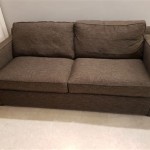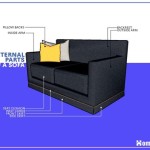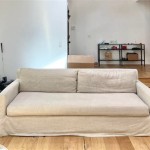Essential Aspects of Sewing a Ripped Leather Sofa
Maintaining leather furniture requires proper care and attention. Rips or tears in leather sofas can be unsightly and diminish their value. Repairing these tears using DIY techniques can save you significant costs compared to professional upholstery services. This article explores the essential aspects of sewing a ripped leather sofa, providing guidance on materials, techniques, and considerations to ensure a successful repair.
Materials:
a) Leather Repair Kit: A comprehensive kit that includes leather filler, adhesive, and colorant matched to the sofa's shade. These kits provide all the necessary materials for an effective repair.
b) Heavy-Duty Needle: A large, sharp needle specifically designed for sewing leather. Its durability ensures it can penetrate the tough material without breaking or bending.
c) Strong Thread: Heavy-duty polyester or nylon thread with a high breaking strength to withstand the stress of sewing and usage.
d) Adhesive Tape: Double-sided adhesive tape or fabric glue can temporarily hold the edges of the tear together, facilitating the sewing process.
Techniques:
a) Cleaning and Preparation: Thoroughly clean the area around the tear with a damp cloth and allow it to dry completely. Use a leather cleaner and conditioner to remove any dirt or residue that could interfere with the repair.
b) Edge Preparation: If the edges of the tear are frayed or uneven, use a sharp blade or scissors to trim them cleanly. Apply adhesive tape to the inside of the edges to hold them in place.
c) Filler Application: Fill any gaps or holes in the leather with the leather filler from the repair kit. Smooth the filler evenly using a spatula or putty knife, allowing it to dry completely.
d) Stitching: Using a large, sharp leather needle and strong thread, sew the edges of the tear together. Overlap the stitches slightly for added strength. Trim any excess thread after sewing.
e) Coloring and Finishing: Apply the colorant included in the repair kit to match the color of the leather sofa. Use a small brush or cotton swabs to distribute the colorant evenly. Allow it to dry completely and seal the repair with a leather protectant to enhance durability.
Considerations:
a) Matching the Leather: Ensuring the repair kit's colorant matches the sofa's leather is crucial for a seamless repair. Perform a color test in an inconspicuous area before applying to the entire tear.
b) Needle Size and Thread Strength: Using the correct needle size and thread strength is essential for effective sewing. Too small a needle or weak thread could break or tear the leather during stitching.
c) Patient and Precision: Leather repair requires patience and precision. Allow ample time for each step, from cleaning to drying, to ensure a proper and durable repair.
d) Seek Professional Help If Necessary: If the tear is extensive or you lack confidence in your DIY skills, consider consulting a professional upholsterer. They possess the expertise and tools for complex leather repairs.
Conclusion:
Repairing a ripped leather sofa using DIY techniques can be a cost-effective and rewarding endeavor. By understanding the essential aspects of materials, techniques, and considerations outlined in this article, you can restore your leather sofa to its former glory. Whether you opt for a self-repair or seek professional assistance, proper care and attention will ensure the longevity and aesthetic appeal of your cherished leather furniture.

Repairing A Ripped Seam In Leather Couch Hometalk

Sofa Repairs With Leather Stitching Wefixanysofa Com

Sofa Repairs With Leather Stitching Wefixanysofa Com

Sofa Repairs With Leather Stitching Wefixanysofa Com

Hide Your Couch S Wear And Tear With These 9 Ingenious Ideas Hometalk

The Fastest Fix For A Rip In Your Sofa

How To Hand Sew A Broken Seam On Leather Recliner

Repairing A Tear In Leather Sofa

Tutorial Diy Upholstery Sofa Rehab A Jennuine Life

How To Repair A Broken Seam In Leather Upholstery








